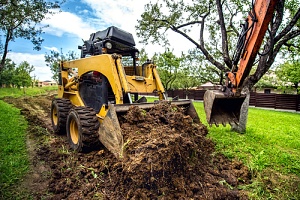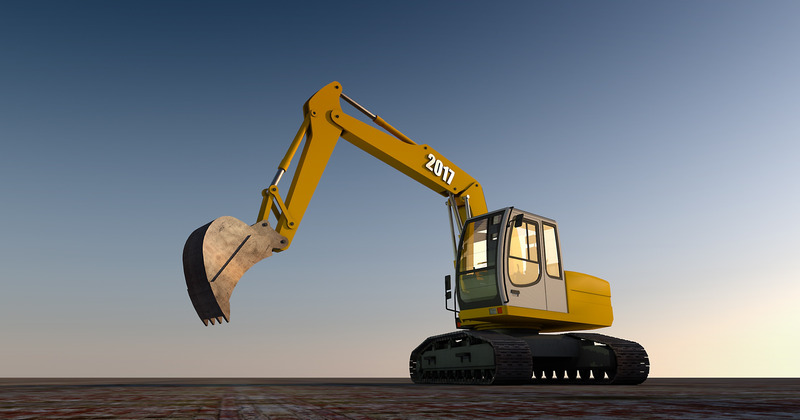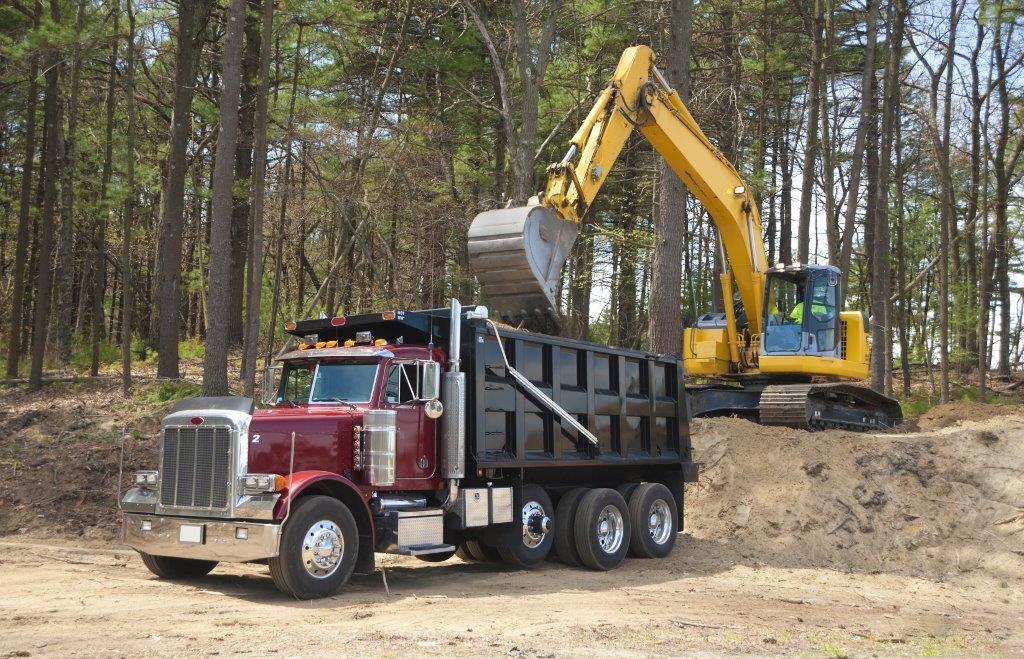 Many outdoor landscaping projects require grading work. When grading, you will often generate large amounts of fill dirt. This dirt will need to be consolidated, protected, loaded and disposed of properly. Below are some tips for your landscaping project.
Many outdoor landscaping projects require grading work. When grading, you will often generate large amounts of fill dirt. This dirt will need to be consolidated, protected, loaded and disposed of properly. Below are some tips for your landscaping project.
Before You Start
Keep Your Ms. Utility Ticket Up To Date During Construction
The reason it is important to have your underground utilities professionally marked off is to ensure a safe digging process. When underground utilities are struck the operator is liable for fines, repairs and civil penalties. Always contact Ms. Utility before you dig.
Ms. Utility Colored Markings
There are many different types of underground utilities. Homeowners & landowners can easily look at these markings on their property or construction site to know what underground utilities exist. The different colored markings include:
- Red – Electrical power lines
- Orange – Communication lines
- Yellow – Gas lines
- Green – Sewer lines
- Blue – Potable water
- Purple – Reclaimed water
- White – Proposed excavation line
Heavy Equipment Tools
Your new outside landscaping project may require grading, excavation, site work, footings and a host of other demands, get the right tools.
Site Work
When it comes to site work you will need a machine with a tooth bucket. This allows you to cut and grade the area to the appropriate level. While performing this work, you can also relocate the material away from the work site. The excavated spoils need to be consolidated. As you move forward with your project, you can re-purpose or load the material for haul off. When performing this type of work you will need a skid loader.
Skid Loader
The skid loader is a rigid frame, engine powered machine with lift arms that are used to attach a wide variety of labor saving tools or attachments. Skid loaders are normally four wheel drive with left side drive wheels that are independent of right side drive wheels. With each side being independent to the other, the wheel speed and direction of rotation of the wheels will determine
which direction the loader turns. Skid loaders are capable of turning in their own tracks. This makes them very maneuverable and valuable for jobs that require the use of compact, agile loader.
Footings
Footings are an important part of foundation construction. They are typically made of concrete with rebar reinforcement. Footings are typically placed for retaining walls. To dig footings you will need a machine specially designed for this purpose. Compact excavators usually perform this type of work for your landscape project.
Compact Excavator
The compact hydraulic excavator can be a tracked or wheeled vehicle with an approximate operating weight of 13,300 pounds. Normally, it includes a standard backfill blade and features an independent boom swing. The compact hydraulic excavator is also known as a mini excavator. A compact hydraulic excavator is different from other types of heavy machinery in the sense that all
movement and functions of the machine are accomplished through the transfer of hydraulic fluid. The work group and blade are activated by hydraulic fluid acting upon hydraulic cylinders. The rotation and travel functions are also activated by hydraulic fluid powering hydraulic motors. Most types of compact hydraulic excavators have three assemblies – house, undercarriage, and the work group.
Loading
With the grading and site work complete, you may have to remove the excavated spoils from your site. You must be sure to have a skid loader of sufficient size to load dump trucks. That’s why proper selection of your heavy equipment is important. You want to save money, however you want to rent machines that have the power and size to complete your project. When renting a skid loader be sure you select the proper size. You should select a skid loader that can do your site work, however have the boom and arm reach to load a dump truck.
Material Hauling
Trucks generally haul 10 -12 cubic yards in volume. Dump trucks are also limited to weight, usually 12 – 14 tons. Check your local jurisdictions for details. In addition, these dump trucks usually have a dump bed height of 10 feet. When loading a dump truck you can see the importance of getting the right machine for the job.
- Measure the length, width and depth of the area.
- 10′ length x 10′ width x 4′ depth = 400
- Divide 400 by 27 = 14.81 cubic yards
- Approximately one dump truck load
Important Note
Excavated material grows by a factor of 1.2 times. When compacted material is excavated, the material will become larger in volume. A good number to use for this effect is 1.2 times the original excavated material calculation.
Storage Area
When grading work starts, you will need to have an area set aside to consolidate your excavated spoils. This area, should be far away from the work area. In addition, you want to place this material in an area where dump trucks have easy and direct access. You know the old saying, “Time Is Money”. You don’t want to double handle the material. This adds time and labor to your project. Keep your costs down with planning and proper sequencing of landscape project events.
Erosion & Sediment Control
Soil erosion and sediment loss from construction sites has been documented as a major source of water pollution. Soil exposed to a rain event can quickly eroded. Erosion allows sediment to move into adjacent storm sewers, lakes and streams.
Local, State and Federal Permits and Codes require escalating enforcement when illegal discharges occur. This means that if a resident, business owner, or property owner who illegally discharges into the storm drain system is liable. Enforcement actions against them will increase in severity with each incident. The severity of the enforcement action is based on a variety of factors. These factors can include but not limited to, the type of substance discharged, the volume of discharge, and its proximity to waterways. Enforcement actions can include a Warning Letter, Notice of Violation, Administrative Citation, Civil Penalty, or Criminal Prosecution. Often times, Administrative Citations range from $100 to $1,000, and Civil Penalties can reach up to $10,000 per day per violation.
Permits
Permits often require the design, specifications and implementation of sediment controls. Your local government has a erosion and sediment control and stormwater management review department. The approval process is often integrated with the County building permit applications. The review and approval process allows successful applicants the issuance of a of a grading permit. As a reminder, failure to abide to specifications as per plan, can result in civil and or criminal penalties.
Dump Truck Hauling
For your protection you should:
- Record the names on trucks.
- Quantity of dump truck loads.
- Confirm physical address of fill dirt supplier.
- Get phones numbers.
- Secure a Certificate of Insurance.
- Keep a Daily Construction Log Book.
Proper Planning for Material Storage During Grading
When planning your landscaping project, it’s crucial to designate a specific area for storing excavated spoils from grading work. This storage area should be located away from the active work zone to prevent interference with ongoing tasks. Additionally, ensure that the area is easily accessible for dump trucks, allowing for efficient loading and removal of fill dirt. By carefully planning the storage and movement of materials, you can streamline your project, minimize labor costs, and avoid unnecessary delays.
Summary

Dirt Connections was started with one goal in mind: providing quality residential and commercial construction services to clients on time and on budget. Reach out for more information on how we can support your next project.
For your convenience our estimates are free and by appointment. Call 703-940-9949 for a free estimate today!














































